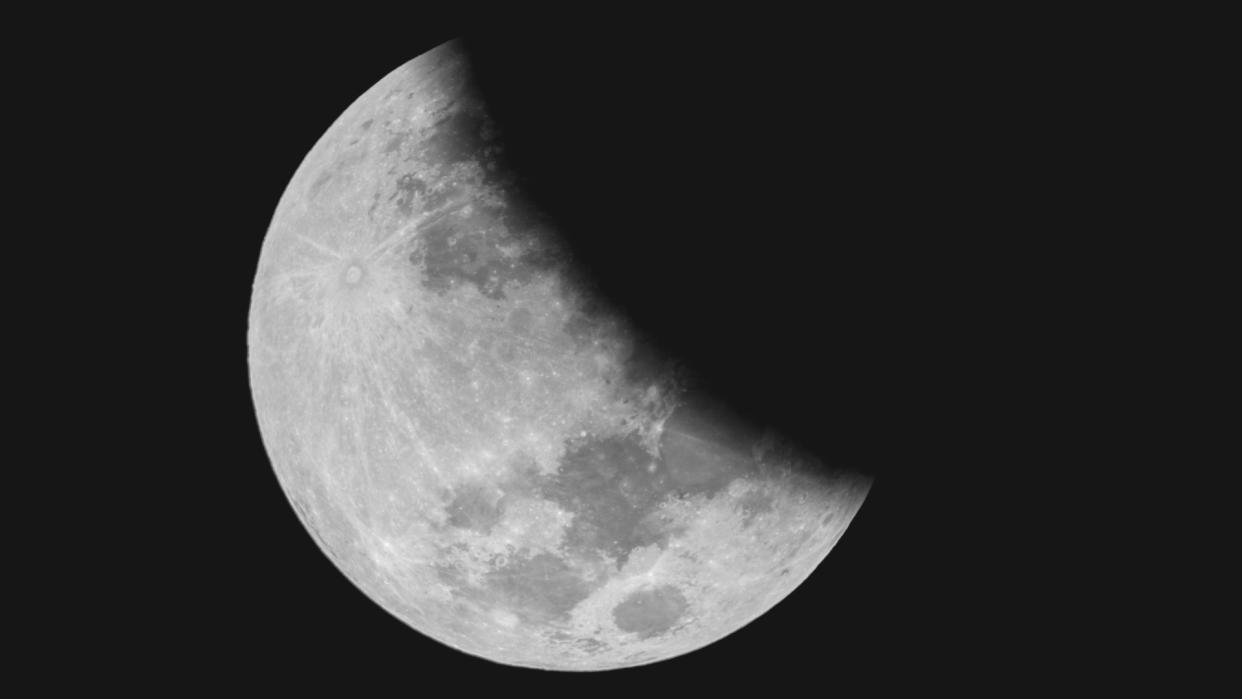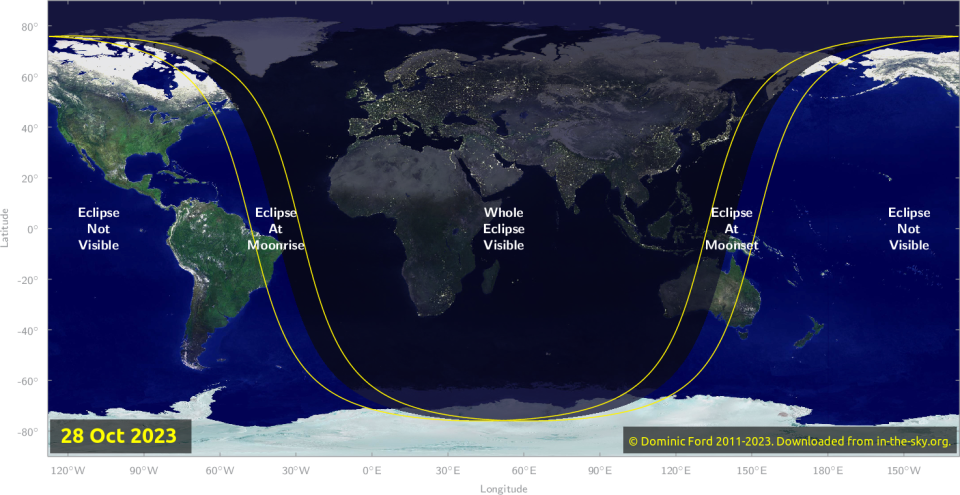What time is the Full Hunter's Moon lunar eclipse on Oct. 28?

The Full Hunter's Moon of October will see the Earth's shadow pass across its face this weekend, creating a partial lunar eclipse.
The lunar eclipse will be fully visible from Africa, Europe, Asia and parts of Western Australia. The eastern tip of South America will get a small glimpse of the eclipse at moonrise, but don't expect an incredible view from there.
The partial lunar eclipse of the Full Hunter's Moon will begin at 2:01 p.m. EDT (1801 GMT) on Oct. 28. The most striking parts of the eclipse should occur around 3:35 p.m. EDT (1935 GMT) as the moon enters the darker part of Earth's shadow, known as the umbra, peaking around 4:14 p.m. EDT (2014 GMT). The eclipse will end around 6:26 p.m. EDT (2226 GMT) as the moon fully emerges from the lighter part of Earth's shadow, known as the penumbra.
If you're not lucky enough to live in the half of the world that will witness the eclipse, you can still watch it unfold thanks to these free livestreams. You can also watch it live here at Space.com.
Related: Don't miss a partial lunar eclipse of October's Full Hunter's Moon this week
TOP TELESCOPE PICK:

See the moon up close! We recommend the Celestron Astro Fi 102 as the top pick in our best beginner's telescope guide.
Partial lunar eclipses occur when the sun, Earth and the moon are aligned, but not perfectly. This means that only a portion of the darkest part of Earth's shadow will cover the moon.
Lunar eclipses only occur during full moons, when our moon and the sun are on opposite sides of Earth, allowing our planet's shadow to fall across the face of our natural satellite.
But there isn't an eclipse during every full moon. That's because the moon's orbital plane is inclined, or tilted, by about 5 degrees relative to that of Earth. That means Earth's shadow is above or below the moon during most full moons. If the moon orbited the Earth perfectly aligned with our planet, we would have an eclipse during each full moon.

If you want to get an up-close look at the moon during the partial eclipse, the full moon or any other time, our guides to the best telescopes and best binoculars are a great place to start.
And if you're looking to take photos of lunar eclipses, full moons or the night sky in general, check out our guide on how to photograph the moon or how to photograph a lunar eclipse, as well as our best cameras for astrophotography and best lenses for astrophotography.
Editor's Note: If you snap an image of the partial lunar eclipse and would like to share it with Space.com’s readers, send your photo(s), comments, and your name and location to spacephotos@space.com.

